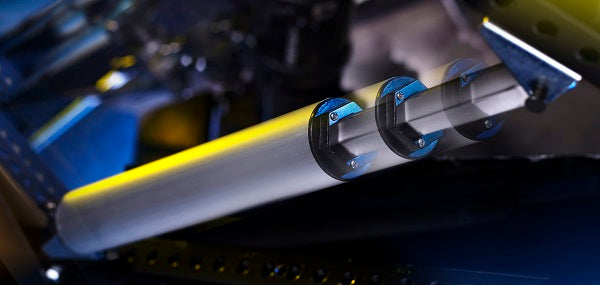The following article is an extract from our Actuator Testing Guide eBook, which was created to give you a comprehensive overview on what you need to do before you implement an electric actuator into your system. This guide will ensure you find the right actuator solution for your application and aim to mitigate any issues that may arise from choosing an incompatible actuator. The main guide is covered over seven chapters in the eBook, and alongside bench testing also includes actuator dimensions and specs, lab testing, field testing, and a convenient checklist you’ll need when testing! To download the full eBook, click here.
Bench Testing a Linear Actuator
Once you have confirmed the physicality of your actuator, conducting a series of bench tests is the next step to ensure it will suit your desired application. These bench tests need to be conducted before taking a deeper dive into lab tests and can be relatively quick. They consist of three main tests:
- Speed
- Current draw
- Sound/noise levels
All three of these tests are by no means necessary as it depends on your application. For example, your application may involve using a linear actuator in an industrial setting, which would mean that testing the noise of the actuator may not be required as these environments are usually quite loud. However, if you are using the linear actuator to open a door, speed and loudness are vital parameters to know. Use your better judgement to weigh the bench tests that you feel play an important role in your application.
1. Speed

The linear speed test involves timing how long it takes for the linear actuator to extend and retract fully. This will then provide an “inches per second” value that can be compared with the linear actuator’s datasheet value. Note that this test's speed value can be a rough estimate since further, more accurate speed tests will be done when conducting lab tests.
As mentioned earlier, depending on the application, some tests are more important than others. In this case, speed is important in applications such as opening a door/hatch or handling items along an assembly line.
To do a quick speed measurement, follow the steps below:
- Power the linear actuator based on its electrical specifications. Since this is just a bench test, there is no need to attach switches or a control box. Simply apply a positive and negative voltage from a power supply or battery to allow the rod to extend/retract fully.
- Once the rod has reached its end position, grab a stopwatch, and zero it.
- Switch the leads on the power supply or battery and get ready to start the timer the moment the rod begins extending/retracting.
- Stop the timer once it reaches its extended/retracted position, note the time, and repeat for the opposite direction.
- Divide the stroke of the linear actuator by the time it took to extend/retract. For example, if your actuator's stroke is 40 inches and it took 10 seconds to extend/retract, the speed is 4 inches/second.
Compare this speed measurement with the linear actuator’s datasheet to determine if it closely matches. This speed measurement is just an initial test and will aid in determining if it is the right linear actuator for the job. The speed will reduce when under load and if the voltage applied is lower than the rated voltage. Please note that depending on the type and the manufacturer of the actuator, there may be a speed tolerance. If your speed measurement differs significantly from the rated specs, it is best to reach out to the manufacturer for troubleshooting.
2. Current Draw
The current draw of the linear actuator with no-load is important to test as it will provide evidence that it is functioning according to its datasheet specifications. Furthermore, determining the current will ensure that your system can handle it and will help to find the appropriate corresponding parts that go with the linear actuator (e.g., a sufficiently rated power supply and control box).
To test a linear actuator’s current draw, simply connect a multimeter in series with one of the leads of a powered linear actuator, and watch the amperage reading as you extend/retract the rod. Based on the reading, you can determine a power supply that will be able to handle that current draw. Bear in mind that the current draw will increase when the linear actuator is loaded.

3. Sound/Noise Levels
As mentioned, the sound/noise level of an actuator may not be critical if it is going to be used in an industrial application. However, for consumer-facing applications, such as a door/hatch or a lever inside a coffee machine, the noise level needs to be determined.
Use a decibel meter held close to the linear actuator as you power it to extend/retract the rod. Ensure this test is done in a quiet environment to avoid background noise from skewing the results. Note the highest decibel rating. What now? How does this value correlate to a decision on whether it is noisy or ideal for your application? Use the table below of familiar sounds and their decibel value to decide on the noise level of the linear actuator and whether it falls within a range that suits your application. Learn about why an actuator might be making more noise than you anticipated here.

Conclusion
We hope this extract of our Actuator Testing Guide was helpful! We recommend conducting this bench testing after you inspect the physical dimensions and specifications of an actuator, but before you conduct any lab or field tests. To learn about these aspects of our testing guide, make sure you download your free copy – the checklist we have included at the end of the eBook will ensure the actuator you have chosen is fully and comprehensively tested.
If you have any queries about bench testing, or any aspect on how to test an actuator, contact our engineering team who will be glad to help!





